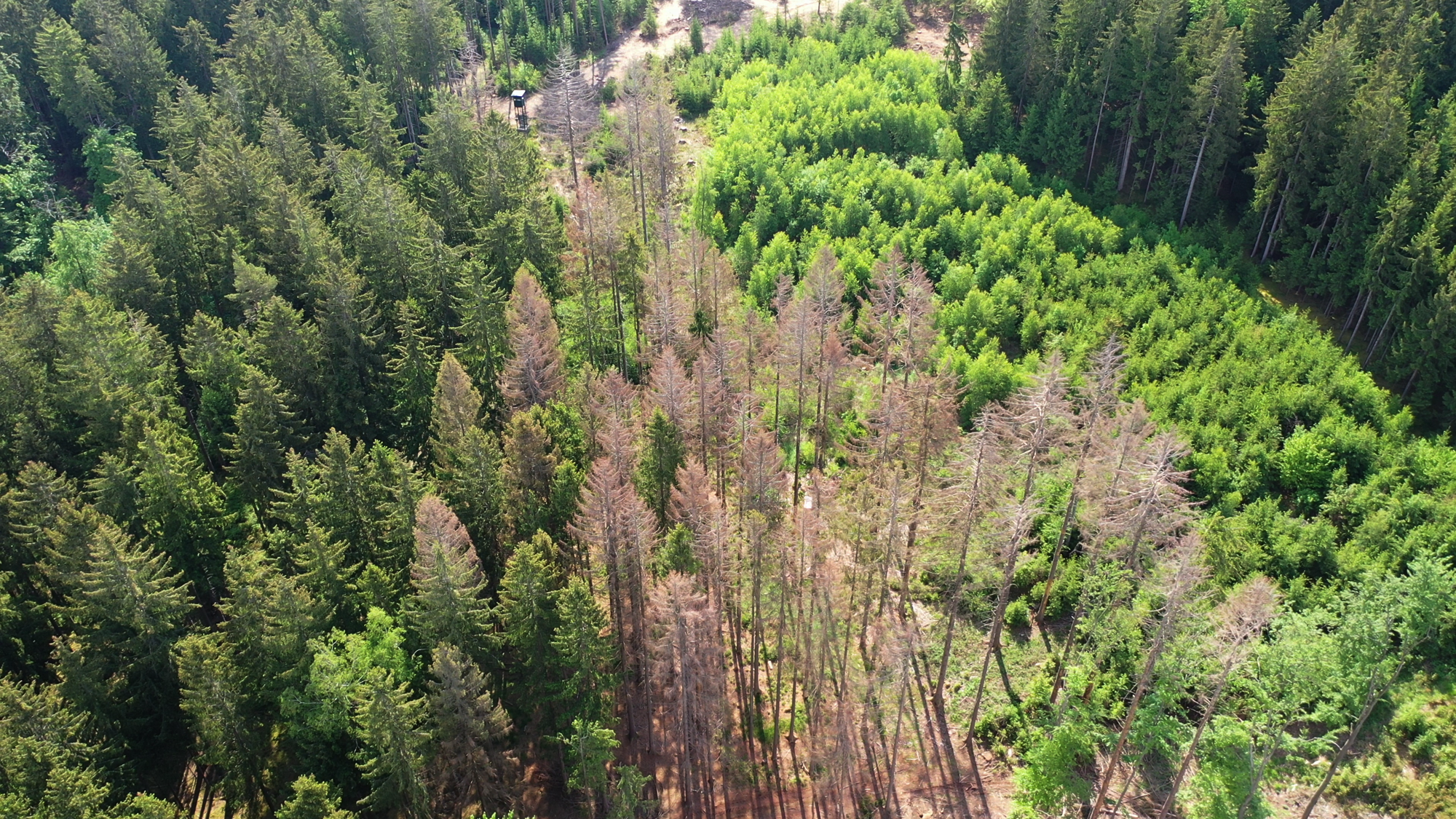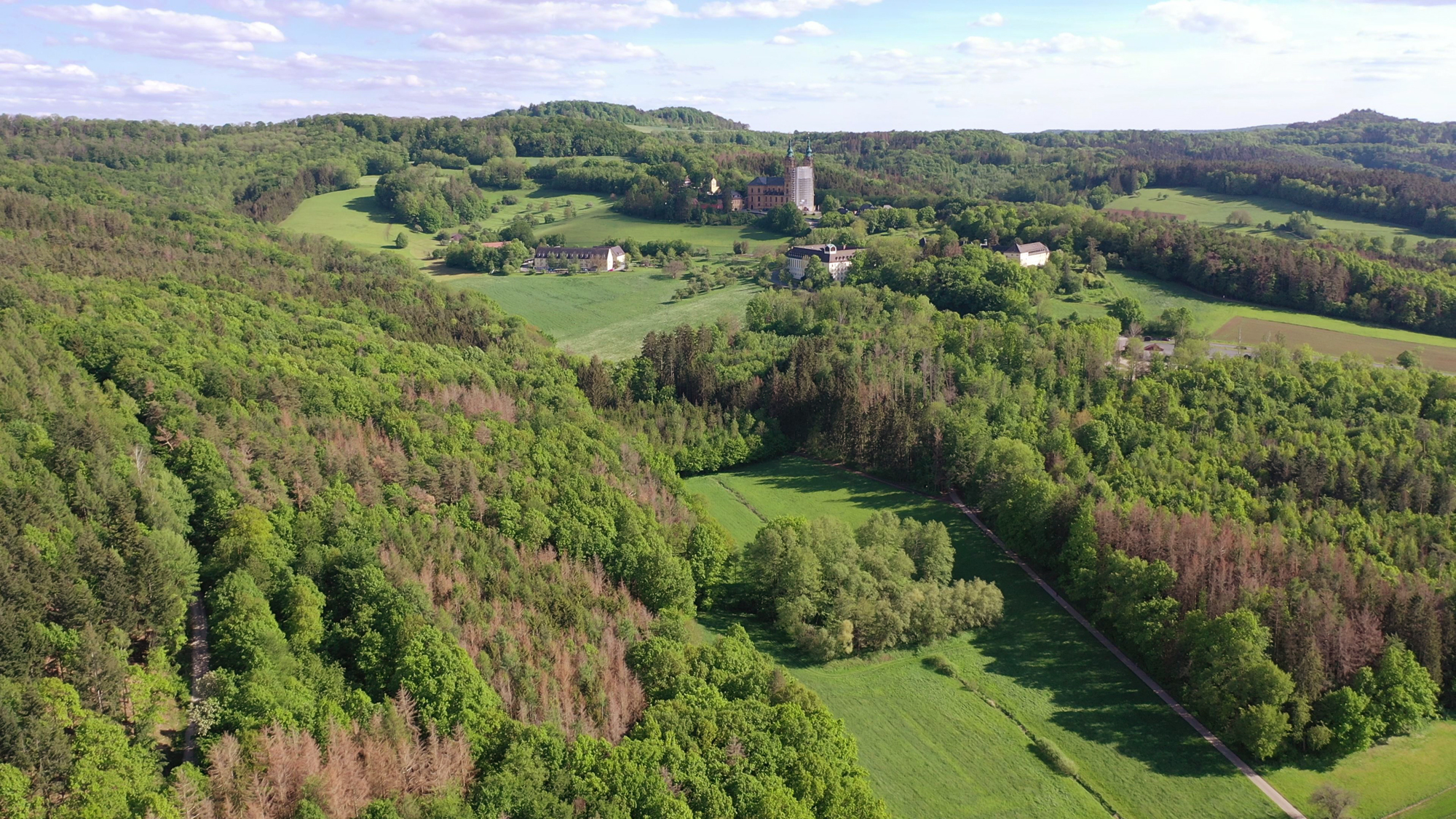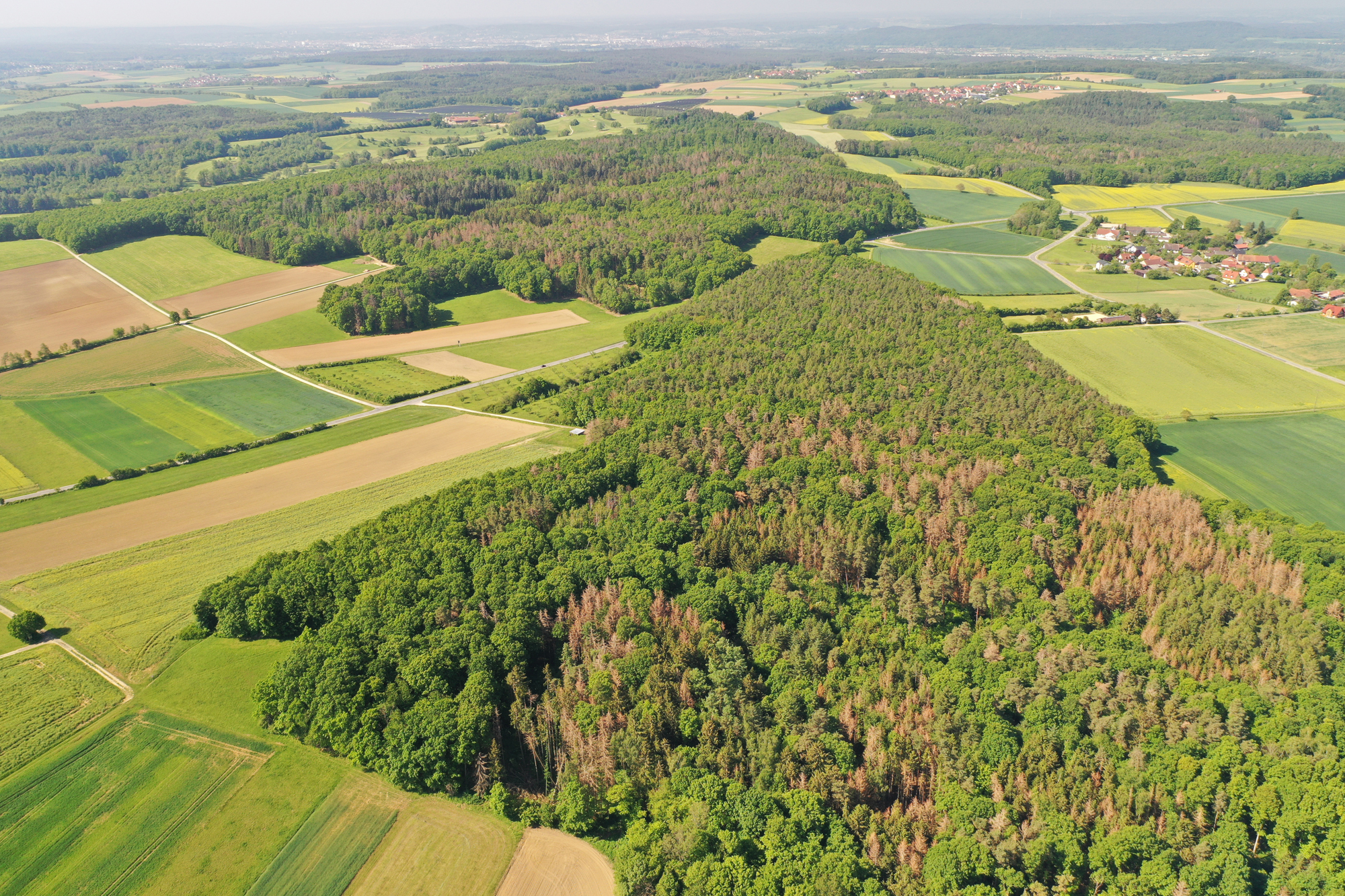Project Description
As a result of climate change, the frequency of summer drought events is increasing worldwide. The combination of drought stress and high temperatures can cause damage to trees and may result in tree death. The dry summers of 2018 and 2019 have severely damaged forests in large parts of Central Europe. As a result of these exceptionally hot and long drought events, many millions of trees have died, leading to substantial financial losses for forest owners.
Figure 1: Group of dead trees at Steinfeld; Source: Jörg Ermert (Forstwirtschaftliche Vereinigung Oberfranken w.V.)
The size of the potentially affected area in Germany - and ultimately worldwide - is large and challenges terrestrial-based forest observations. Therefore, we want to combine measurement techniques based on remote sensing tools to identify and quantify stress-induced forest damage. To this end, hyperspectral satellite data (Sentinel-2 and Landsat) will be combined with high-resolution reference data (orthophotos, drone-based imagery, forest monitoring) to allow us to quantify tree mortality. The spectral data will further be used to establish relationships with environmental factors influencing the susceptibility of forests to drought events.
Figure 2: Extent of forest damage around the Basilica Vierzehnheiligen near Lichtenfels; Source: Jörg Ermert (Forstwirtschaftliche Vereinigung Oberfranken w.V.)
This will allow for a more precise classification of forest damage and a better estimation of future mortality trends. The results will be the base for further development of process-oriented modelling to facilitate tree mortality projections under various drought and heat stress scenarios.
Figure 3: Forest damage at Windischletten; Source: Jörg Ermert (Forstwirtschaftliche Vereinigung Oberfranken w.V.)




